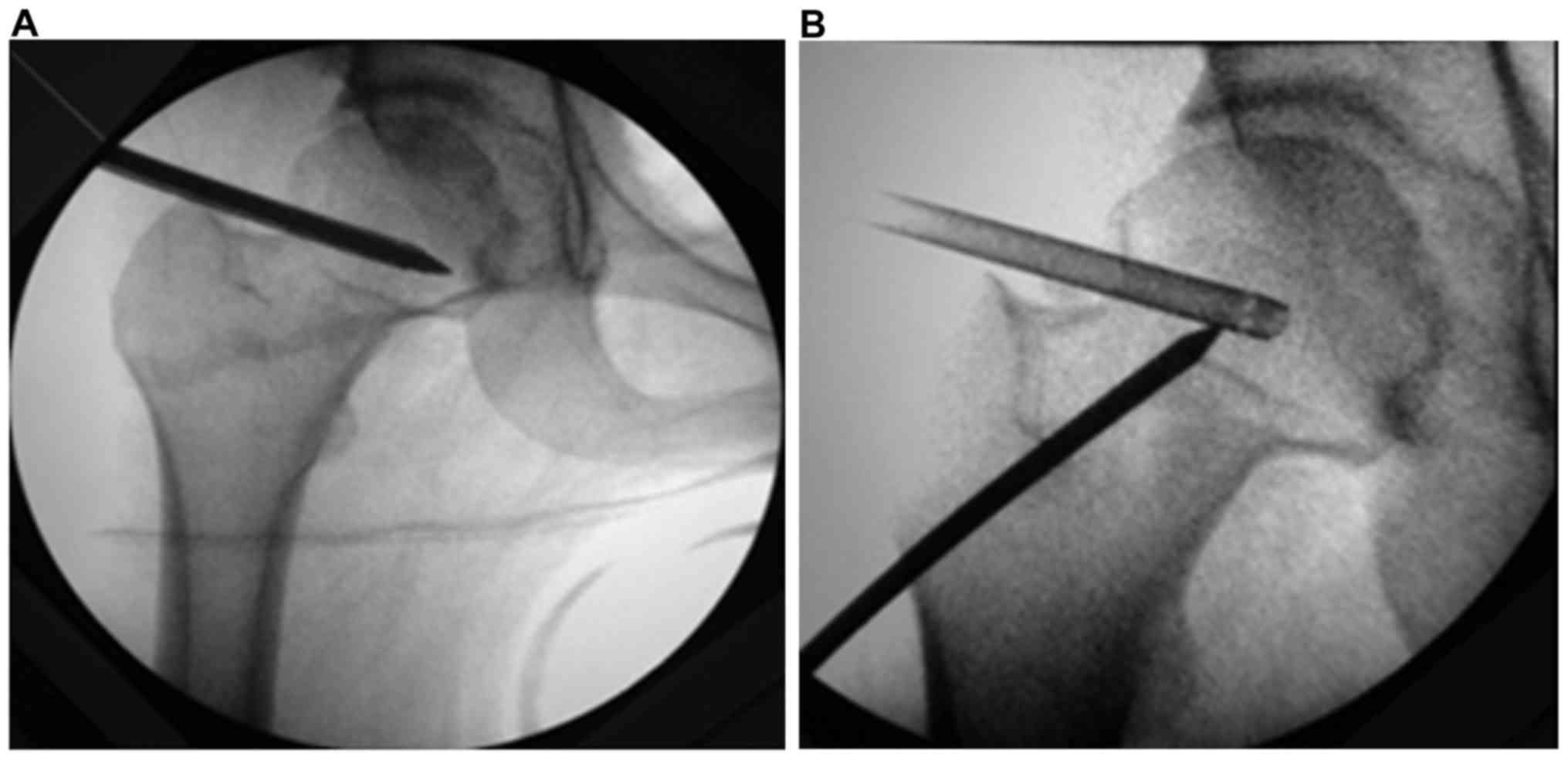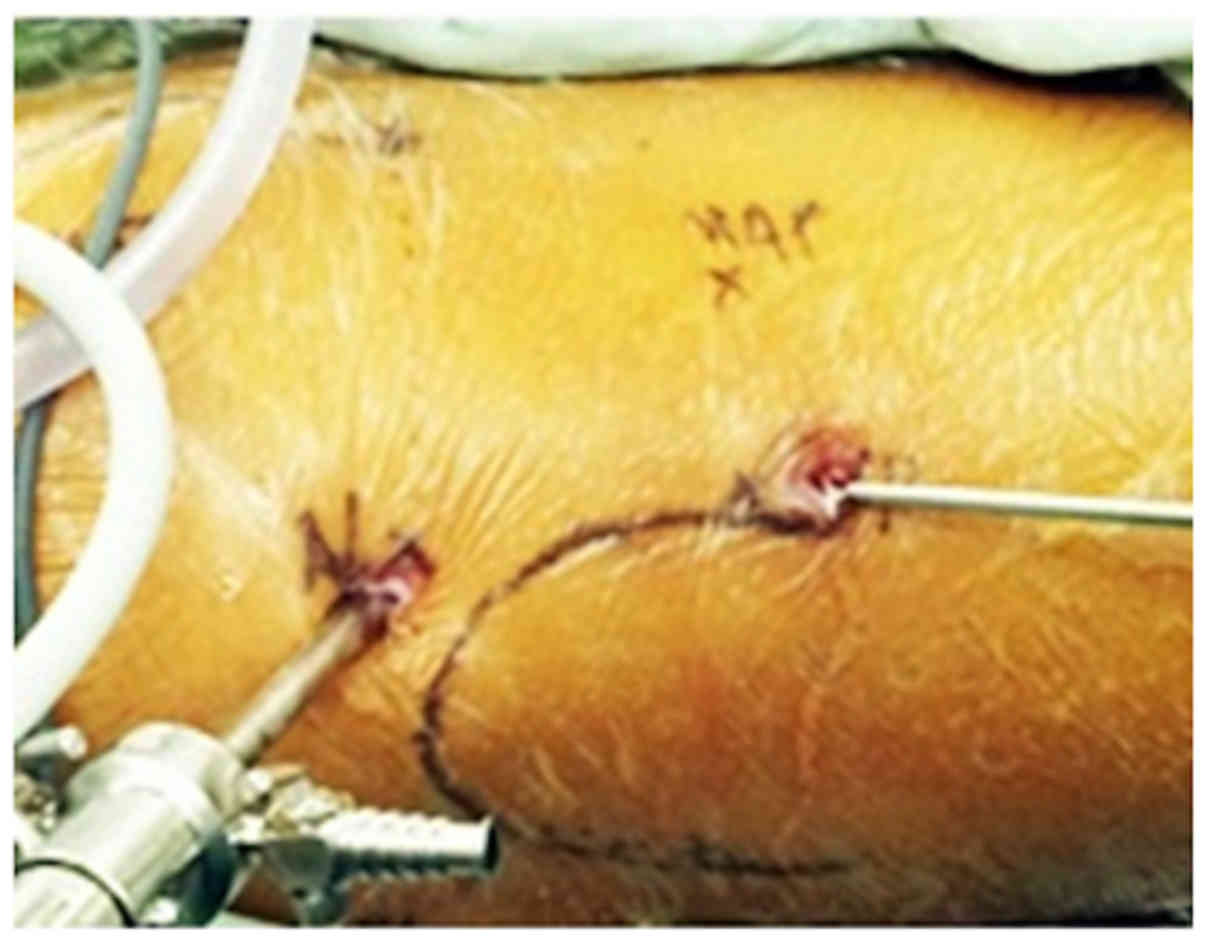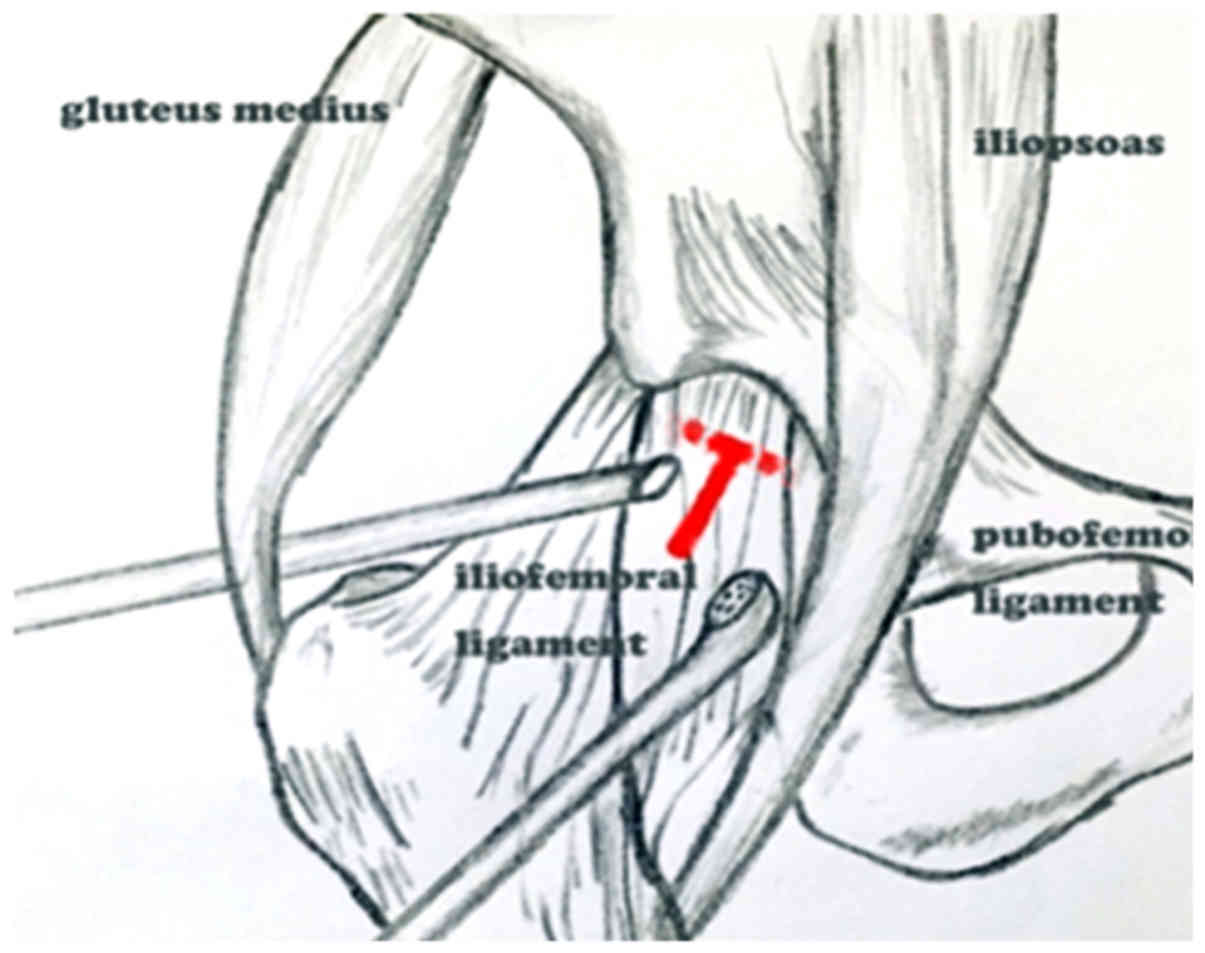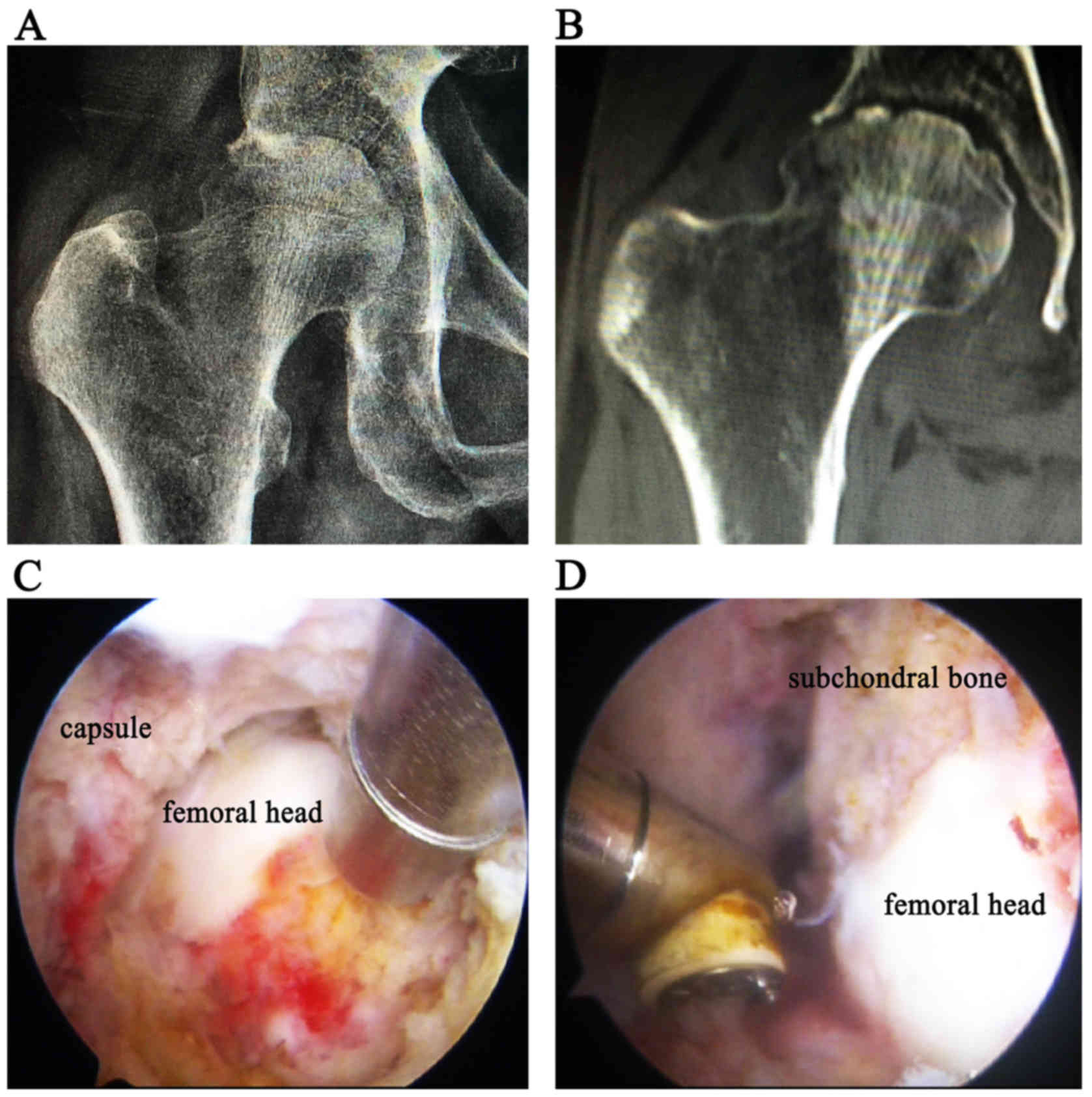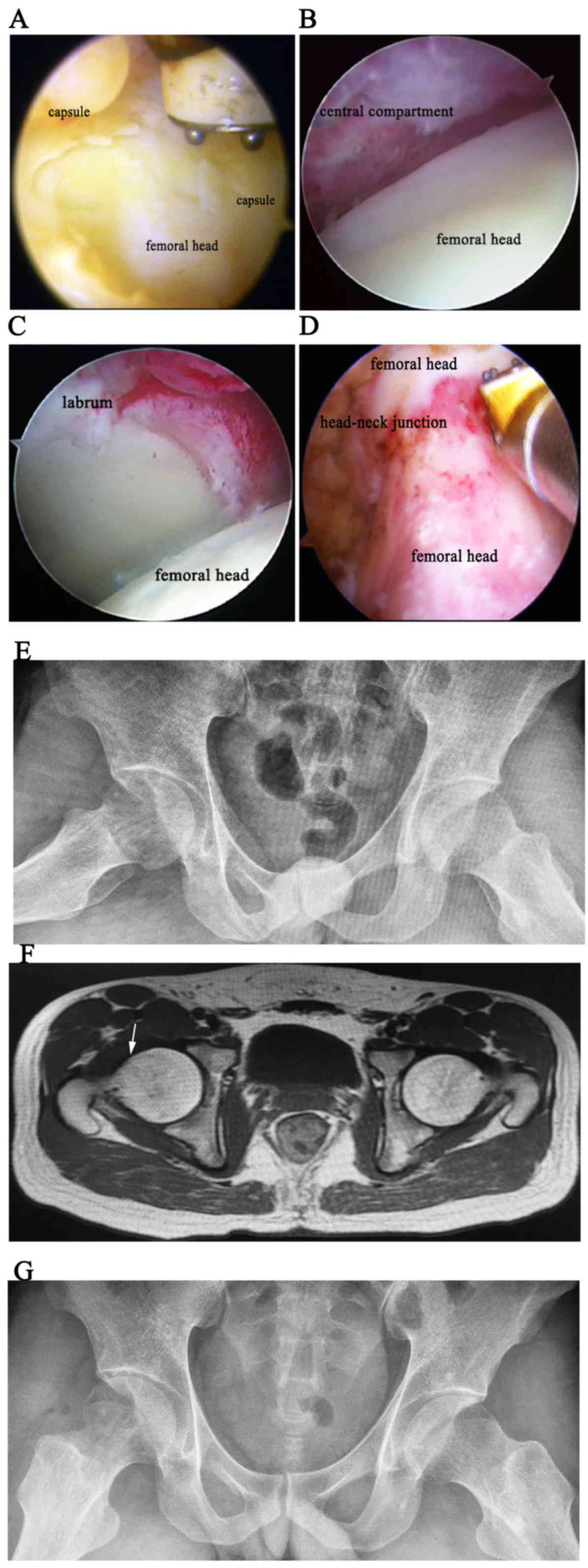|
1
|
McCarthy JC and Lee JA: Hip arthroscopy:
Indications, outcomes, and complications. Instr Course Lect.
55:301–308. 2006.PubMed/NCBI
|
|
2
|
Sampson TG: Complications of hip
arthroscopy. Clin Sports Med. 20:831–835. 2001. View Article : Google Scholar : PubMed/NCBI
|
|
3
|
Mehta N, Chamberlin P, Marx RG, Hidaka C,
Ge Y, Nawabi DH and Lyman S: Defining the learning curve for hip
arthroscopy: A threshold analysis of the volume-outcomes
relationship. Am J Sports Med. 46:1284–1293. 2018. View Article : Google Scholar : PubMed/NCBI
|
|
4
|
Ekhtiari S, de Sa D, Haldane CE, Simunovic
N, Larson CM, Safran MR and Ayeni OR: Hip arthroscopic capsulotomy
techniques and capsular management strategies: A systematic review.
Knee Surg Sports Traumatol Arthrosc. 25:9–23. 2017. View Article : Google Scholar : PubMed/NCBI
|
|
5
|
Bedi A, Galano G, Walsh C and Kelly BT:
Capsular management during hip arthroscopy: From femoroacetabular
impingement to instability. Arthroscopy. 27:1720–1731. 2011.
View Article : Google Scholar : PubMed/NCBI
|
|
6
|
Horisberger M, Brunner A and Herzog RF:
Arthroscopic treatment of femoroacetabular impingement of the hip:
A new technique to access the joint. Clin Orthop Relat Res.
468:182–190. 2010. View Article : Google Scholar : PubMed/NCBI
|
|
7
|
Forster-Horvath C, Domb BG, Ashberg L and
Herzog RF: A method for capsular management and avoidance of
iatrogenic instability: Minimally invasive capsulotomy in hip
arthroscopy. Arthrosc Tech. 6:e397–e400. 2017. View Article : Google Scholar : PubMed/NCBI
|
|
8
|
Clohisy JC, Carlisle JC, Beaulé PE, Kim
YJ, Trousdale RT, Sierra RJ, Leunig M, Schoenecker PL and Millis
MB: A systematic approach to the plain radiographic evaluation of
the young adult hip. J Bone Joint Surg Am. 90 Supp 4:47–66. 2008.
View Article : Google Scholar : PubMed/NCBI
|
|
9
|
Hellman MD, Mascarenhas R, Gupta A,
Fillingham Y, Haughom BD, Salata MJ and Nho SJ: The false-profile
view may be used to identify cam morphology. Arthroscopy.
31:1728–1732. 2015. View Article : Google Scholar : PubMed/NCBI
|
|
10
|
Camp CL, Reardon PJ, Levy BA and Krych AJ:
A simple technique for capsular repair after hip arthroscopy.
Arthrosc Tech. 4:e737–e740. 2015. View Article : Google Scholar : PubMed/NCBI
|
|
11
|
Grzybowski JS, Malloy P, Stegemann C,
Bush-Joseph C, Harris JD and Nho SJ: Rehabilitation following hip
arthroscopy-a systematic review. Front Surg. 2:212015. View Article : Google Scholar : PubMed/NCBI
|
|
12
|
Enseki KR and Kohlrieser D: Rehabilitation
following hip arthroscopy: An evolving process. Int J Sports Phys
Ther. 9:765–773. 2014.PubMed/NCBI
|
|
13
|
Rath E, Sharfman ZT, Paret M, Amar E,
Drexler M and Bonin N: Hip arthroscopy protocol: Expert opinions on
post-operative weight bearing and return to sports guidelines. J
Hip Preserv Surg. 4:60–66. 2017. View Article : Google Scholar : PubMed/NCBI
|
|
14
|
Lavini F, Renzi-Brivio L, Aulisa R,
Cherubino F, Di Seglio PL, Galante N, Leonardi W and Manca M: The
treatment of stable and unstable proximal femoral fractures with a
new trochanteric nail: Results of a multicentre study with the
Veronail. Strategies Trauma Limb Reconstr. 3:15–22. 2008.
View Article : Google Scholar : PubMed/NCBI
|
|
15
|
Harris WH: Traumatic arthritis of the hip
after dislocation and acetabular fractures: Treatment by
moldarthroplasty. An end-result study using a new method of result
evaluation. J Bone Joint Surg Am. 51:737–755. 1969. View Article : Google Scholar : PubMed/NCBI
|
|
16
|
Byrd JW and Jones KS: Prospective analysis
of hip arthroscopy with 2-year follow-up. Arthroscopy. 16:578–587.
2000. View Article : Google Scholar : PubMed/NCBI
|
|
17
|
Hung M, Hon SD, Cheng C, Franklin JD, Aoki
SK, Anderson MB, Kapron AL, Peters CL and Pelt CE: Psychometric
evaluation of the lower extremity computerized adaptive test, the
modified harris hip score, and the hip outcome score. Orthop J
Sports Med. 2:23259671145621912014. View Article : Google Scholar : PubMed/NCBI
|
|
18
|
Martin HD, Savage A, Braly BA, Palmer IJ,
Beall DP and Kelly B: The function of the hip capsular ligaments: A
quantitative report. Arthroscopy. 24:188–195. 2008. View Article : Google Scholar : PubMed/NCBI
|
|
19
|
Nakano N, Lisenda L, Jones TL, Loveday DT
and Khanduja V: Complications following arthroscopic surgery of the
hip: A systematic review of 36 761 cases. Bone Joint J.
99-B:1–1583. 2017. View Article : Google Scholar
|
|
20
|
Tomaszewski KA, Popieluszko P, Henry BM,
Roy J, Sanna B, Kijek MR and Walocha JA: The surgical anatomy of
the lateral femoral cutaneous nerve in the inguinal region: A
meta-analysis. Hernia. 20:649–657. 2016. View Article : Google Scholar : PubMed/NCBI
|
|
21
|
Thaunat M, Murphy CG, Chatellard R,
Sonnery-Cottet B, Graveleau N, Meyer A and Laude F: Capsulotomy
first: A novel concept for hip arthroscopy. Arthrosc Tech.
3:e599–e603. 2014. View Article : Google Scholar : PubMed/NCBI
|
|
22
|
Ranawat AS, McClincy M and Sekiya JK:
Anterior dislocation of the hip after arthroscopy in a patient with
capsular laxity of the hip. A case report. J Bone Joint Surg Am.
91:192–197. 2009. View Article : Google Scholar : PubMed/NCBI
|
|
23
|
Domb BG, Philippon MJ and Giordano BD:
Arthroscopic capsulotomy, capsular repair, and capsular plication
of the hip: Relation to atraumatic instability. Arthroscopy.
29:162–173. 2013. View Article : Google Scholar : PubMed/NCBI
|
|
24
|
Strickland CD, Kraeutler MJ, Brick MJ,
Garabekyan T, Woon JTK, Chadayammuri V and Mei-Dan O: MRI
evaluation of repaired versus unrepaired interportal capsulotomy in
simultaneous bilateral hip arthroscopy: A double-blind, randomized
controlled trial. J Bone Joint Surg Am. 100:91–98. 2018. View Article : Google Scholar : PubMed/NCBI
|
|
25
|
Dippmann C, Kraemer O, Lund B, Krogsgaard
M, Holmich P, Lind M, Briggs K, Philippon M and Mygind-Klavsen B:
Multicentre study on capsular closure versus non-capsular closure
during hip arthroscopy in Danish patients with femoroacetabular
impingement (FAI): Protocol for a randomised controlled trial. BMJ
Open. 8:e0191762018.PubMed/NCBI
|
|
26
|
Horner NS, Vikas K, MacDonald AE, Naendrup
JH, Simunovic N and Ayeni OR: Femoral neck fractures as a
complication of hip arthroscopy: A systematic review. J Hip Preserv
Surg. 4:9–17. 2017.PubMed/NCBI
|















